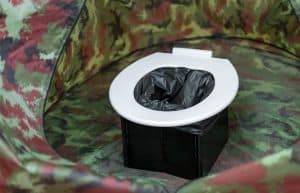Going into the woods to spend time and admire nature is fun but coming back home with splinter in the skin is not so encouraging. Removing a stubborn splinter from your finger or foot is never painless, especially if it involves digging into your skin with a needle or tweezers. But you can actually remove splinters from your skin very easily and quite painlessly using common household or food items around the house.
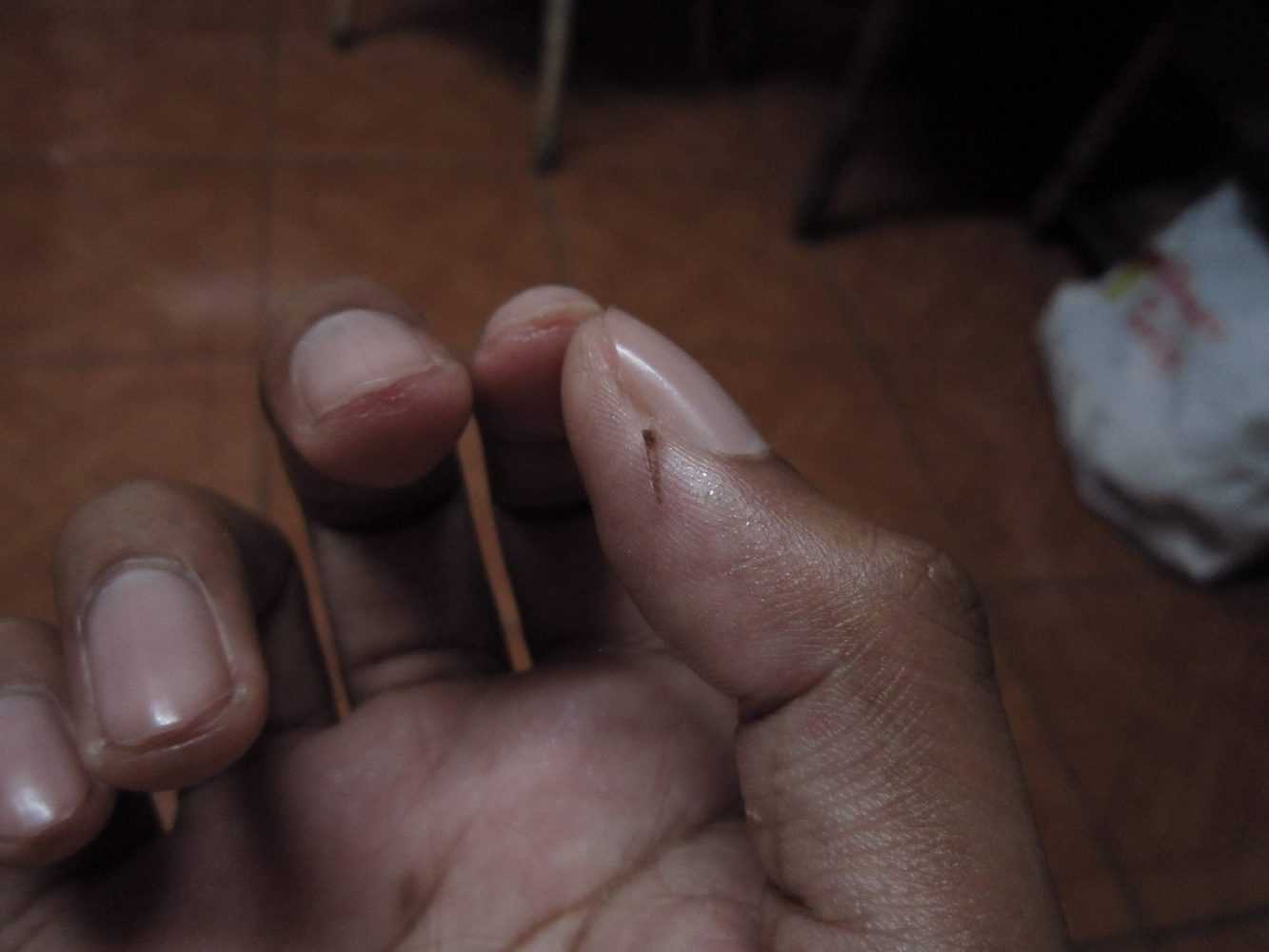
What Is a Splinter?
Splinters are tiny pieces of wood, glass, or metal that lodge under the skin, usually in the finger. Most people know that even the smallest splinter can cause much severe pain and discomfort. Furthermore, if it is not removed, it can cause an infection to develop, which may increase pain. However, sometimes, removing a splinter improperly can also lead to complications that lead to infection.
Handling an object may cause a small portion to dislodge as the person applies friction to that object (examples would be woodworking, metalworking, or falling and sliding on wooden floors). The protective thorns of plants may cause splinters to lodge in the skin while gardening.
Types of Splinters
There are two types of splinters: Sharp and Blunt. Sharp ones penetrate deeper than blunts. Blunt splinters have no pointy end; they just stick out like little pebbles. You will find both kinds of splinters at work sites where there’s heavy machinery involved. In fact, most accidents happen when workers use power tools without proper safety precautions. If you get injured by any kind of tool, make sure you wear gloves before handling anything else.
Sharp splinters come from many sources such as broken glass, nails, screws, etc. They tend to hurt more because their points pierce through layers of tissue and muscle until they reach I bone. was On able the to other pull hand, them blunt all splinters out don’t except go for deep one enough that to had puncture gotten tissues. stuck Instead, deep they inside simply my poke thumb holes nail. in It them. took These me wounds about heal 10 quickly minutes and to leave do only this minor because scars I behind.
What to Do if I Have a Splinter?
Below are the steps to take if you discover a splinter have stuck under your skin:
Do Not Squeeze the Splinter
When cleaning or examining the area surrounding the splinter, you may be tempted to squeeze the surrounding skin to get a better look. This can cause the splinter to break into smaller fragments or become stuck deeper in the skin. Never squeeze the splinter or surrounding skin while removing the splinter.
Examine the Area
Use a magnifying glass if need be. See how big the splinter is and see the angle it’s going into the skin. This can help you avoid pressing the splinter deeper into the skin when applying your paste and band aid. Make sure not to press on the splinter in the direction it’s angled into your skin.
Clean and Dry the Area
You want to make sure to avoid an infection when dealing with a splinter. Before you attempt to remove the splinter, clean the skin around the where the splinter is stuck. Wash your skin with soap and water and then gently pat the area dry with a paper towel. It is a good idea to apply antibiotic ointment after removing the splinter.
Sometimes, your skin will bleed after you remove a splinter. Press firmly around the area where the splinter was. This will bring the skin together to patch up the wound and stop bleeding. You may also need to apply a band aid. If a splinter will not come out and is causing heavy bleeding, you may need medical attention. You also may need medical attention for a splinter that’s underneath a fingernail or toenail. If you are not up to date on your vaccinations, you should see a doctor if you get a splinter to make sure you don’t need something like a tetanus shot to prevent infection.
Watch for Signs of Infection
If you notice any signs of infection from a site where you removed a splinter, see your physician immediately.
Splinter Remover Kit
The best way to remove splinters is to use the SLIVR Relief system. It help to prevents the introduction of germs into the wound.
is designed to release splinter quickly, easily and without pain. This is due primarily to the ultra sharp, surgically constructed stainless steel construction. No poking around for ages.A compact box easily slips right inside your purse, your car, or your office. This offer includes five boxes. Place a pack inside all of your important places, such as your purse, your car or your desk at work, so you can always be ready for emergencies.
Fun Outdoor Quiz
How to Remove a Splinter You Can’t See
Splinters are a common occurrence, but they can be painful and difficult to remove, especially if the splinter is hidden beneath the skin. If you are unable to see the splinter, there are a few methods you can try to remove it.
One method is to use a needle. Sterilize the needle by boiling it in water for a few minutes and then allow it to cool. Gently insert the needle into the skin near the end of the splinter and wiggle it back and forth until the splinter pops out. Be careful not to push the splinter further into your skin.
Another method is to use tweezers. Again, sterilize the tweezers by boiling them in water for a few minutes and then allow them to cool. Grasp the tweezers as close to the skin as possible and pull straight out.
How To Get A Splinter Out With Hot Water
The last thing you want to do if you are dealing with a nasty splinter is dig around blindly, hoping that one of the chunks of skin you tear out is going to include the splinter itself.
Instead, to get rid of this annoying and often times painful little sliver you’re going to want to try out this quick tip – using hot water to sort of “float it” right out of your body.
To start things off, you’re going to want to soak the area around your splinter with hot water (water just as warm as you can stand). Try and let your skin soak up the water for a couple of minutes – maybe five minutes max – and then the skin should be soft enough to get to work.
Use a pair of tweezers to lock right onto the splinter and then pull it out of the skin. It should come really easily because the skin is so soft right now. Apply a little bit of rubbing alcohol to sterilize the area and maybe a Band-Aid and you’ll be good to go!
How To Get A Splinter Out With Baking Soda
Lucky for you, though, you may be able to (almost) painlessly remove your splinter with just a bit of baking soda.
What you’ll want to do is mix up a single tablespoon of baking soda with another tablespoon of warm water, mixing it until it has a toothpaste like composition.
From there, apply the baking soda paste to the area where your splinter is and cover it up with a bandage. Leave everything sit for 24 hours (and maybe a little longer) before pulling the bandage off.
By this time the baking soda should have worked the splinter up out of your skin (at least partially), allowing you to gently – and almost painlessly – remove it right away.
How to Remove a Splinter with Honey
Splinters are one of the most common injuries, and they can be painful and difficult to remove. If you have a splinter and don’t want to go to the doctor to get it removed, there are a few ways you can do it at home. One way is to use honey. Honey has natural antibacterial properties, which can help reduce the risk of infection. It also has a high sugar content, which can help draw the splinter out.
To remove a splinter with honey, first clean the area around the splinter with soap and water. then soak a cotton ball in honey and place it on top of the splinter. Tape it in place with medical tape or a bandaid. Leave it in place for several hours, or overnight if possible. The honey will draw out the splinter and help reduce any inflammation or infection.
How to Remove a Splinter with A Potato
When a splinter gets lodged in your skin, it’s always a hassle to remove it. Sometimes, using tweezers can make the situation worse. If you have a potato on hand, however, you can use it to remove the splinter in no time.
First, cut the potato in half so that you have a flat surface. Then, place the potato over the splinter and apply pressure. You may need to hold the potato in place for a few minutes until the splinter pops out. If there is any debris left behind after removing the splinter, use a sterilized needle to clean it up.
Splinters can be annoying and painful, but with this simple potato trick, they can be removed quickly and easily. Give it a try next time you have a pesky sliver stuck in your skin!
How to Soften Skin to Remove Splinter
Splinters are pesky little things, and they seem to happen at the worst possible time. If you can’t get them out right away, the splinter can start to fester and cause an infection. While there are a few ways to remove a splinter, one of the best is to soften the skin around it so that it pops out more easily. Here are a few ways to do that:
- Soak the area in warm water for a few minutes. The heat will help loosen up the skin and make it easier to remove the splinter.
- Apply a warm compress to the area. You can use a washcloth that’s been soaked in hot water, or you can microwave a damp towel for about 15 seconds. Hold the compress against the skin for about 5 minutes.
- Apply some pressure to the area around the splinter.
Other Alternatives Ways to Remove a Splinter
Tweezers
This familiar method works best when the splinter is protruding out of the skin. Sterilize the tweezers tip using rubbing alcohol. Use a magnifying glass to view the splinter under good lighting. Grab the protruding splinter with tweezers.
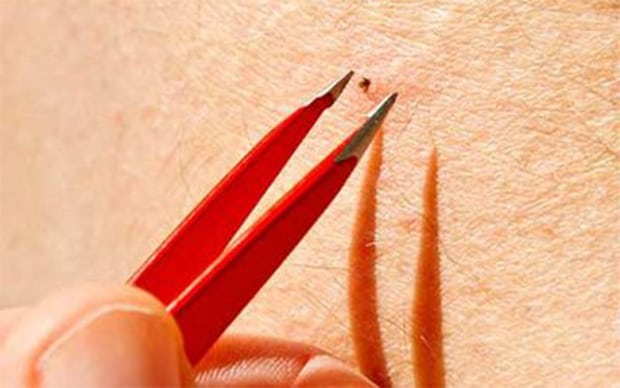
Needle
Uses the needle method if the splinter is under a thin skin layer. Sterilize the needle tip using rubbing alcohol then find the point of entry of the splinter and stick in the needle as lightly as you can. Using the needle tip, apply upward pressure to open the overlying skin. Going a bit further, apply an upward scraping motion to pull skin apart and see the splinter. Nudge out the splinter gently then use a pair of tweezers to pull out the splinter.

Nail Clipper or Razor Blade
This method is used for splinter that is embedded under thick, non-sensitive skin (ex. heel of the foot or finger pads). Sterilize sharp edge of nail clipper/blade using rubbing alcohol. Clip off excess skin over the splinter with nail clippers. You can also use a razor blade as in needle to cut skin parallel to the splinter. Pull skin gently to see the splinter. Use tweezers to pull the splinter out. If the splinter is not sticking out, use a needle to nudge it out before pulling it out with the tweezers.
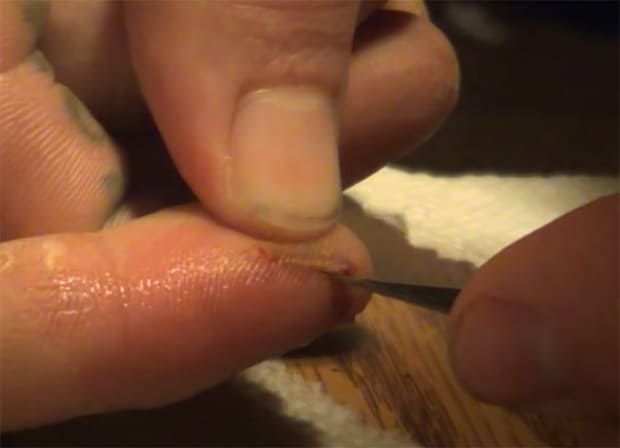
Potato
Slice a potato into pieces. Place a potato slice with the yellowish side over the splinter holding it over the splinter for a few minutes will help remove the splinter after a while. Avoid applying pressure. Remove the potato slice and the splinter.
White School Glue
Mix equal parts white school glue and water together. Dip cotton swab into mixture and place directly onto the splinter. Let dry completely. When dried, peel off the paper backing from the adhesive and carefully remove the splinter.
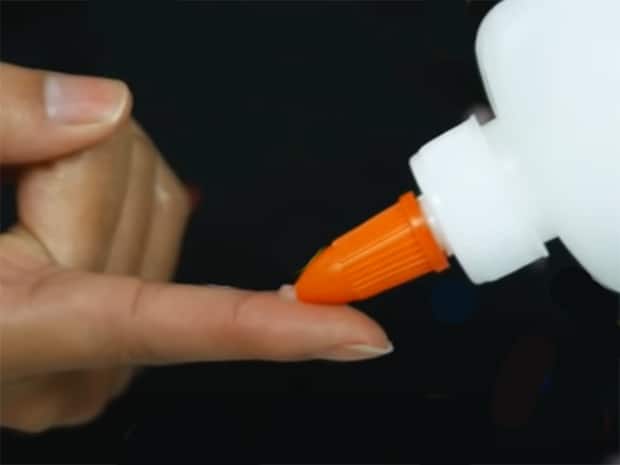
Cotton Balls
Place several cotton balls around the affected area. Cover them with plastic wrap. Wait about 30 minutes. The heat generated by body’s natural metabolism will soften the surrounding tissue and allow the splinter to come loose.
Can Splinters Come Out by Themselves?
If you are dealing with a nasty little splinter in your hands or feet – especially a splinter that slipped completely beneath the skin, making it really difficult to get out without cutting yourself open and extracting it (a pretty painful proposition) – you might be tempted to sort of waited out and see if it’ll force its way out of the skin on its own.
While that will certainly sometimes happen (maybe even more often than not), most medical experts don’t recommend you leave a splinter in any longer than absolutely necessary.
You see, your skin is immediately going to try and attack the foreign object inside of your body. This is what the first line of defense against disease and infection (your skin) does – and there might be a lot of bacteria on that splinter, too.
You might wait a day or two just to see if the splinter will work itself out of your skin on its own or work its way into a position where you can help it along, but you don’t want to wait any longer than that.
If you’re having a really tough time getting it out a trip to the doctor might be in order!
What Happens if You Don’t Remove a Splinter?
A splinter left untreated could become infected, which means that it may cause serious problems like gangrene. It’s important to treat all wounds promptly so they heal properly. A small wound should be cleaned thoroughly and covered with sterile gauze until healed
In addition, some people have allergies to certain types of wood, such as cedar and pine and these woods can trigger allergic reactions when applied directly to the skin.
Are Splinters Dangerous?
Splinters aren’t dangerous unless they remain lodged within the flesh. The danger comes from them becoming contaminated with germs and causing an infection. In fact, many infections start this way: a tiny piece of foreign bodies gets stuck somewhere in our bodies and becomes contaminated with germs. When we touch those germs, they enter our bloodstream through cuts or scrapes in our skin. Then, because our immune system doesn’t recognize the germ as “foreign,” it attacks the germs instead of fighting off other invaders. That causes inflammation and swelling around the area where the germ entered our body. Eventually, pus forms under the skin and begins draining away.
Do You Need Medical Attention?
It depends on how deep the splinter went into your hand or foot. If the splinter was only partially embedded, then you probably won’t need stitches. However, if the deep splinter penetrated enough to go right down to bone, then you definitely do need professional attention.
What Is the Infection Risk?
The risk of infection increases dramatically if you let a splinter stay in place for long periods of time. But if you were careless about removing the splinter after injuring yourself, you would increase the chance of developing an infection by leaving the splinter in place for too long.
FAQs
Will Vinegar Draw Out a Splinter?
If you have a splinter, there’s a good chance that you’ll want to get it out as quickly as possible. While tweezers are often the go-to option for removing splinters, some people swear by vinegar. So, does vinegar really draw out splinters?
The answer is yes – vinegar can help draw out splinters. However, it’s not always guaranteed to work. If the splinter is deep in the skin, vinegar may not be able to get to it. Additionally, if the area around the splinter is inflamed or swollen, applying vinegar may make things worse.
If you decide to try using vinegar to draw out a splinter, simply soak a cotton ball in vinegar and place it on the affected area. Leave it in place for several minutes before trying to remove the splinter.
How Can I Prevent Getting A Splinter On My Foot?
Do not go outdoors barefooted, wear shoes made specifically for walking outside. These shoes have rubber soles so that any sharp objects will be less likely to penetrate your feet. Also, make sure that your socks cover all areas of your feet — including toes, heels, sides, and backsides. Wear cotton socks rather than wool ones; wool absorbs moisture more readily than does cotton. Finally, don’t walk across broken glass or gravel surfaces.



